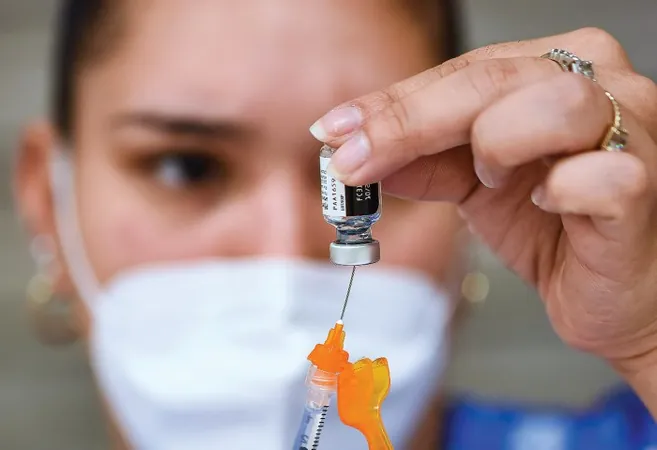
Shock Findings: Bone Fragility in Postmenopausal Women and Older Men with Hypoparathyroidism!
2025-04-10
Author: Ming
A Hidden Crisis: Bone Health Concerns for Older Patients
Postmenopausal women and men over the age of 50 suffering from chronic hypoparathyroidism are showing alarming signs of bone fragility, resulting in a concerning rate of fractures and osteoporosis, according to a new study that emphasizes the urgent need for improved monitoring of these patients' skeletal health.
What is Hypoparathyroidism?
Hypoparathyroidism is characterized by low levels of parathyroid hormone (PTH), often due to surgical damage to the parathyroid glands. The condition can also arise from autoimmune diseases, congenital factors, or other unknown causes. This deficiency leads to decreased calcium levels in the body, resulting in diminished bone turnover—the ongoing process of breaking down and rebuilding bone tissue.
The Study Unveiled!
Recently published in Osteoporosis International, the study titled "Skeletal Health Status Among Patients with Chronic Hypoparathyroidism: Results from the Canadian National Hypoparathyroidism Registry (CNHR)" dissected the skeletal health of 101 adults, focusing primarily on postmenopausal women, who made up 82% of the study's participants.
Most participants were undergoing treatments that included calcium supplements and active vitamin D, alongside potential PTH replacement therapies such as teriparatide.
Grim Symptoms and Disturbing Statistics
The study revealed common symptoms among these patients, with tingling sensations being reported by nearly 45%. Other symptoms included numbness, muscle cramps, fatigue, and even depression in some cases.
Worryingly, postmenopausal women exhibited significantly higher levels of calcium, alkaline phosphatase, and vitamin D while simultaneously showing poorer kidney function and metabolic health.
Fractures and Osteoporosis: A Growing Concern
A staggering 31% of postmenopausal women and 20% of older men were found to have osteoporosis, a condition that weakens bones and increases fracture risk. Meanwhile, 83% of those with reported fragility fractures were women over 50, highlighting a concerning trend in bone health disparities.
The Call for Action!
The researchers strongly advocate for systematic and timely assessments of skeletal health using advanced imaging techniques, as current guidelines do not adequately address the needs of this vulnerable population. They emphasize that understanding the bone health of people with chronic hypoparathyroidism is crucial for preventing further complications.
This study sheds light on a critical health issue and serves as a wake-up call for enhanced vigilance and tailored care for postmenopausal women and older men with hypoparathyroidism. The time for action is now!



 Brasil (PT)
Brasil (PT)
 Canada (EN)
Canada (EN)
 Chile (ES)
Chile (ES)
 Česko (CS)
Česko (CS)
 대한민국 (KO)
대한민국 (KO)
 España (ES)
España (ES)
 France (FR)
France (FR)
 Hong Kong (EN)
Hong Kong (EN)
 Italia (IT)
Italia (IT)
 日本 (JA)
日本 (JA)
 Magyarország (HU)
Magyarország (HU)
 Norge (NO)
Norge (NO)
 Polska (PL)
Polska (PL)
 Schweiz (DE)
Schweiz (DE)
 Singapore (EN)
Singapore (EN)
 Sverige (SV)
Sverige (SV)
 Suomi (FI)
Suomi (FI)
 Türkiye (TR)
Türkiye (TR)
 الإمارات العربية المتحدة (AR)
الإمارات العربية المتحدة (AR)